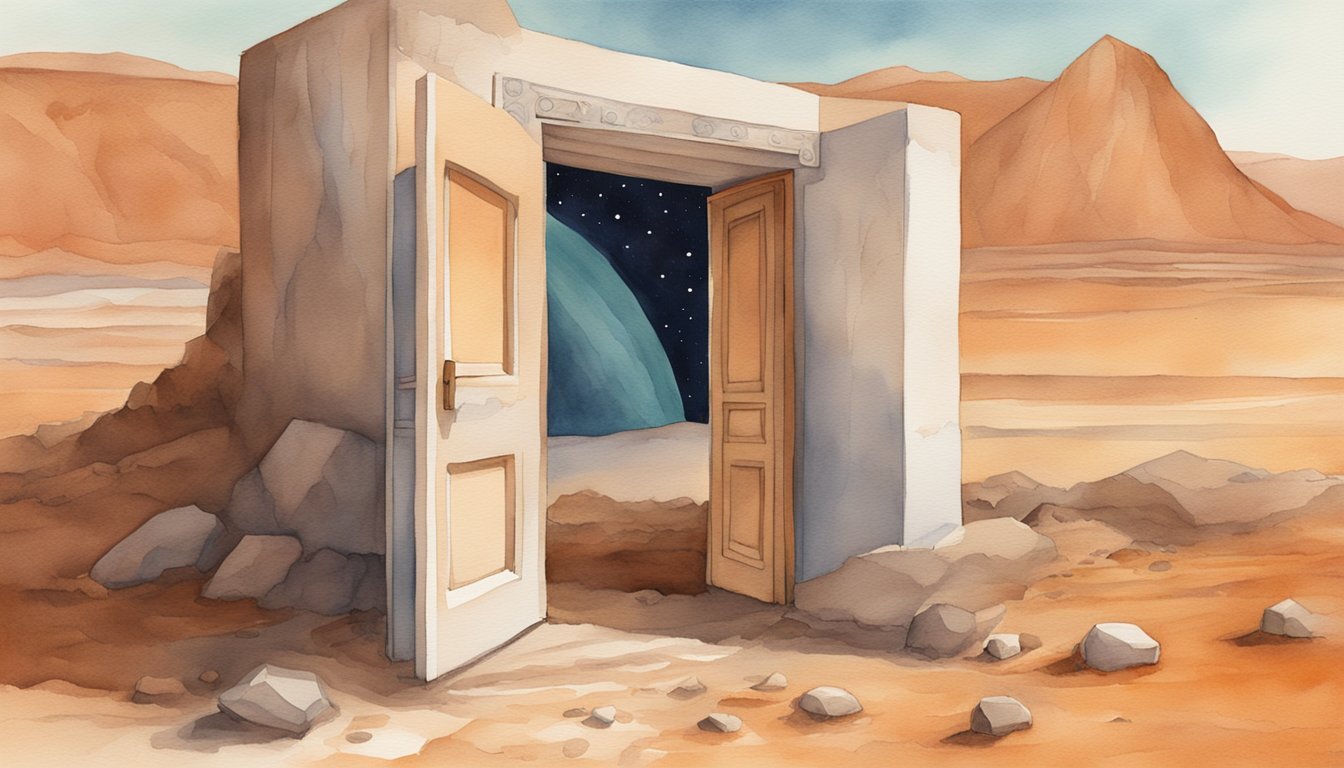Unveiling Martian Doorways
Origins and Geology
The mysterious “doorway” on Mars has caught the attention of many space enthusiasts. This intriguing formation was discovered on Mount Sharp by NASA’s Curiosity Rover, and it has sparked curiosity among scientists and the public. The “doorway” is, in fact, an open fracture in the Martian landscape, and it has been shaped by natural processes such as erosion and Marsquakes.
Mars has a rich geologic history that has captivated scientists for decades. The Red Planet‘s landscape features a variety of natural formations, including bedrock, cliffs, and fractures. Although the Martian “doorway” might seem like evidence of extraterrestrial life, it is actually a result of geologic processes like natural erosion, Earth-like wind, and the occasional Marsquake.
Curiosity Rover’s Role
The Mars Curiosity Rover has played a crucial role in exploring and understanding the Red Planet’s geology. Equipped with a Mastcam, the rover has captured stunning images of the Martian surface, including the famous East Cliffs “doorway.” This intriguing formation was spotted on May 7, 2022, or Sol 3466 in the Gale Crater region known as Mount Sharp.
The images captured by the Curiosity Rover help scientists better understand the Martian landscape and its early history. For instance, the area around the “doorway” reveals evidence of open fractures that indicate the presence of water in the past. NASA’s Jet Propulsion Laboratory is responsible for the rover’s mission, ensuring it accurately captures fascinating aspects of Mars’ geology such as the “Doorway” and other geological features.
In conclusion, the Martian “doorway” is an intriguing but entirely natural geologic feature influenced by erosion, Marsquakes, and other processes. Through the tireless work of the Curiosity Rover, NASA continues to unravel the mysteries of Mars and its captivating geology.
Cultural Impact and Misinformation

Social Media Buzz
The “doorway on Mars” has caught the attention of social media users, sparking discussions and debates about the possibility of extraterrestrial life. The photo, taken by a Mars rover, shows an intriguing rock formation that resembles a doorway or archway on the surface of the Red Planet. This image has led many to speculate about the existence of aliens, ancient civilizations, and even alien technology, with comparisons to structures such as tombs and entrances found in ancient Egypt.
Due to its striking appearance, the Mars doorway has also been compared to the famous “Face on Mars” and other anomalies that have caught the public’s imagination. The photo has given rise to a variety of conspiracy theories, with some even suggesting that the doorway might be a secret entrance to an underground alien base or a remnant of a long-gone Martian civilization.
Separating Fact from Fiction
While many are captivated by the allure of potential extraterrestrial life on Mars, it is essential to separate fact from fiction. The doorway-like structure is, in reality, a naturally-occurring crevice caused by open fractures on the surface of Mars, and not a sign of alien life or ancient civilizations. The opening is approximately 12 inches tall and 16 inches wide, which makes it similar in size to a dog door. According to Mars experts and NASA officials, these vertical fractures are fairly common on the rocky Martian surface.
In order to better understand the planetary features like the Mars doorway, several Mars rovers like Perseverance and Curiosity have been exploring the Red Planet. These rovers capture and transmit high-resolution images and data, aiding scientists in their ongoing research on Mars’ geological and atmospheric conditions, such as marsquakes and pressure changes.
It is not the first time that Mars images have triggered sensational claims. Previously, people have claimed to spot objects like squirrels, spoons, and unidentified flying objects in the photos sent by the rovers. These instances are often examples of pareidolia, a psychological phenomenon where patterns or shapes are perceived in random objects or images. It is crucial to rely on evidence-based interpretations and statements from experts like the NASA Science Mission Directorate and the European Space Agency to avoid the spread of misinformation about Mars and extraterrestrial life.
In conclusion, while the Mars doorway has captured the public’s attention and fueled imaginations, it is important to base our understanding on accurate information from reliable sources. The ongoing exploration of Mars by rovers and scientific missions continues to reveal fascinating insights into the planet’s history and potential for life, without the need for exaggerated claims or conspiracy theories.

